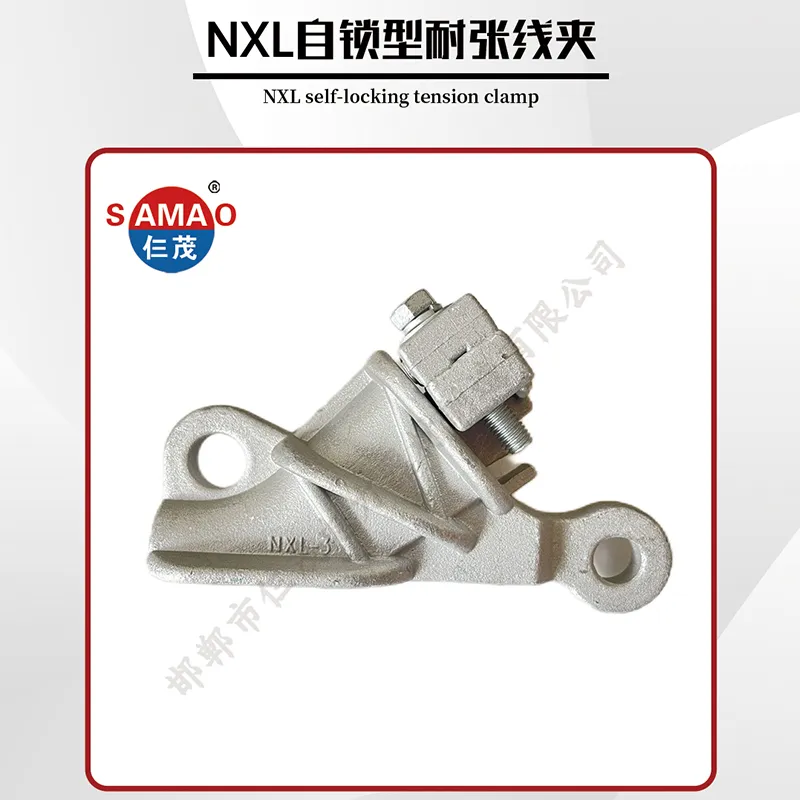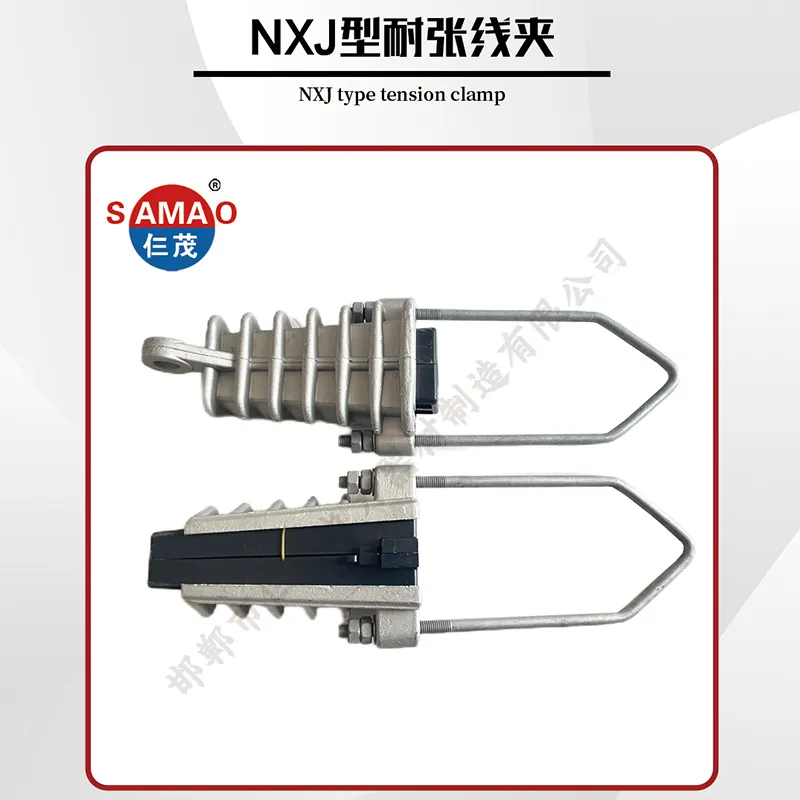2 月 . 14, 2025 04:34
Back To List
parallel groove clamp
The Ultimate Guide to Overhead Transmission Line Clamps Enhancing Connection Integrity
Professional Insight and Best Practices From an expert's perspective, the selection and installation of overhead transmission line clamps should follow best practices to maximize efficiency and safety. Key considerations include - Load Capacity and Compatibility Ensuring that the clamp can handle the mechanical loads and is compatible with conductor types and sizes is fundamental. Overlooking this can lead to premature wear and failure. - Regular Maintenance Inspections should be conducted regularly to check for any signs of wear, corrosion, or mechanical failures. Proactive maintenance often prevents catastrophic failures that result in costly repairs and power outages. - Compliance with Standards Installation and materials should conform to industry standards and regulations, ensuring safety and reliability. Following such guidelines helps in achieving optimal performance and mitigating risks associated with faulty materials or installation practices. - Environmental Considerations Taking into account the geographical and climatic conditions can inform the selection of materials and design. Areas prone to severe weather may require additional considerations, such as reinforced materials or specialized designs to withstand environmental stressors. Innovative Advances and Future Outlook With technological advancements, modern transmission line clamps are being designed with enhanced features, including anti-corrosion treatments, improved mechanical strength, and easier installation processes. Future trends suggest a shift towards smart grids where real-time monitoring and self-adjusting clamps could further enhance system reliability, optimizing efficiency and reducing maintenance costs. The integration of IoT technology could revolutionize the management of these components, allowing for predictive maintenance and real-time adjustments. This innovative approach not only promises to cut costs but also to improve the overall safety and reliability of the power grid. Conclusion Understanding the pivotal role of overhead transmission line clamps in electricity distribution systems is paramount for professionals engaged in power infrastructure development and maintenance. These components ensure the safety, reliability, and efficiency of transmission lines, affecting not only the power industry but also the overarching economic landscape. As technology and materials continue to evolve, so too will the potential for these vital components to support increasingly complex grid systems, emphasizing the importance of continued innovation and adherence to best practices in their application.


Professional Insight and Best Practices From an expert's perspective, the selection and installation of overhead transmission line clamps should follow best practices to maximize efficiency and safety. Key considerations include - Load Capacity and Compatibility Ensuring that the clamp can handle the mechanical loads and is compatible with conductor types and sizes is fundamental. Overlooking this can lead to premature wear and failure. - Regular Maintenance Inspections should be conducted regularly to check for any signs of wear, corrosion, or mechanical failures. Proactive maintenance often prevents catastrophic failures that result in costly repairs and power outages. - Compliance with Standards Installation and materials should conform to industry standards and regulations, ensuring safety and reliability. Following such guidelines helps in achieving optimal performance and mitigating risks associated with faulty materials or installation practices. - Environmental Considerations Taking into account the geographical and climatic conditions can inform the selection of materials and design. Areas prone to severe weather may require additional considerations, such as reinforced materials or specialized designs to withstand environmental stressors. Innovative Advances and Future Outlook With technological advancements, modern transmission line clamps are being designed with enhanced features, including anti-corrosion treatments, improved mechanical strength, and easier installation processes. Future trends suggest a shift towards smart grids where real-time monitoring and self-adjusting clamps could further enhance system reliability, optimizing efficiency and reducing maintenance costs. The integration of IoT technology could revolutionize the management of these components, allowing for predictive maintenance and real-time adjustments. This innovative approach not only promises to cut costs but also to improve the overall safety and reliability of the power grid. Conclusion Understanding the pivotal role of overhead transmission line clamps in electricity distribution systems is paramount for professionals engaged in power infrastructure development and maintenance. These components ensure the safety, reliability, and efficiency of transmission lines, affecting not only the power industry but also the overarching economic landscape. As technology and materials continue to evolve, so too will the potential for these vital components to support increasingly complex grid systems, emphasizing the importance of continued innovation and adherence to best practices in their application.
LATEST PRODUCTS




